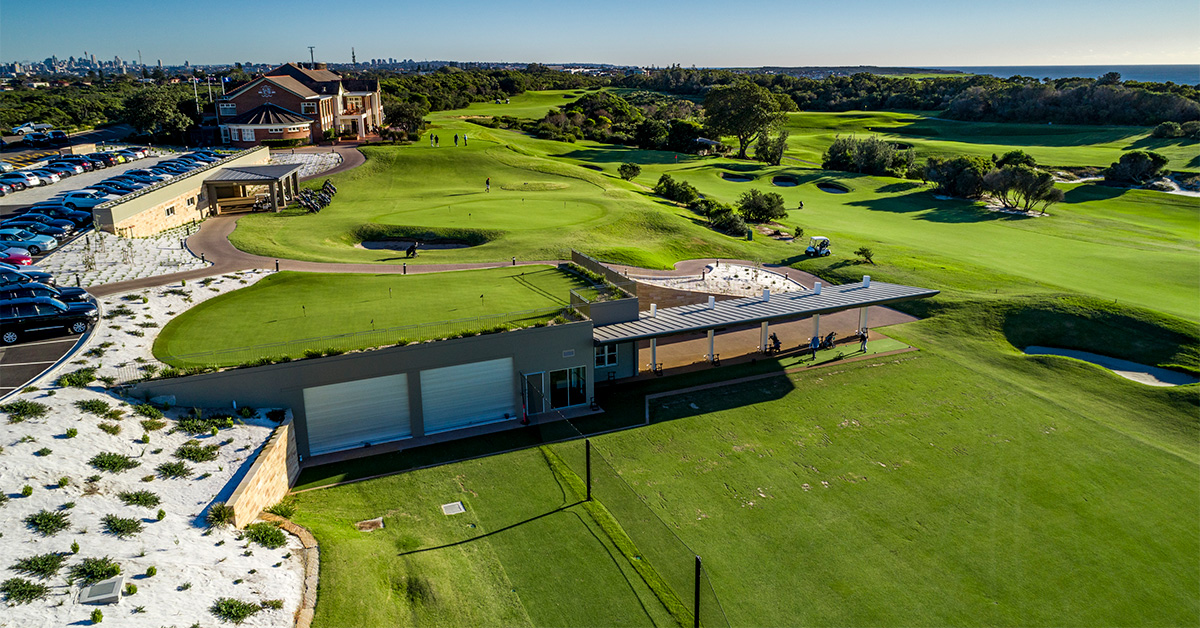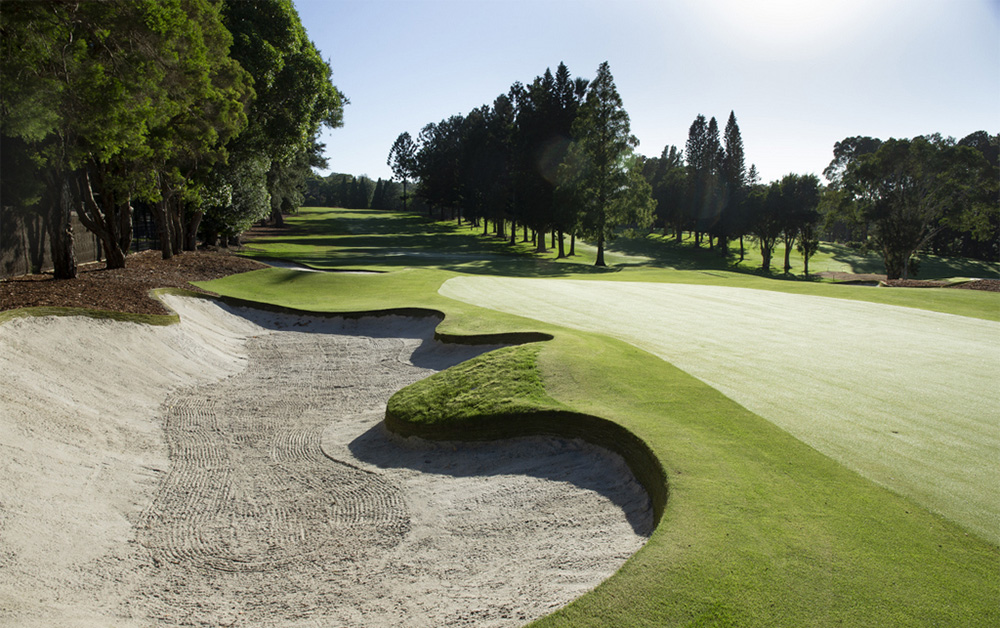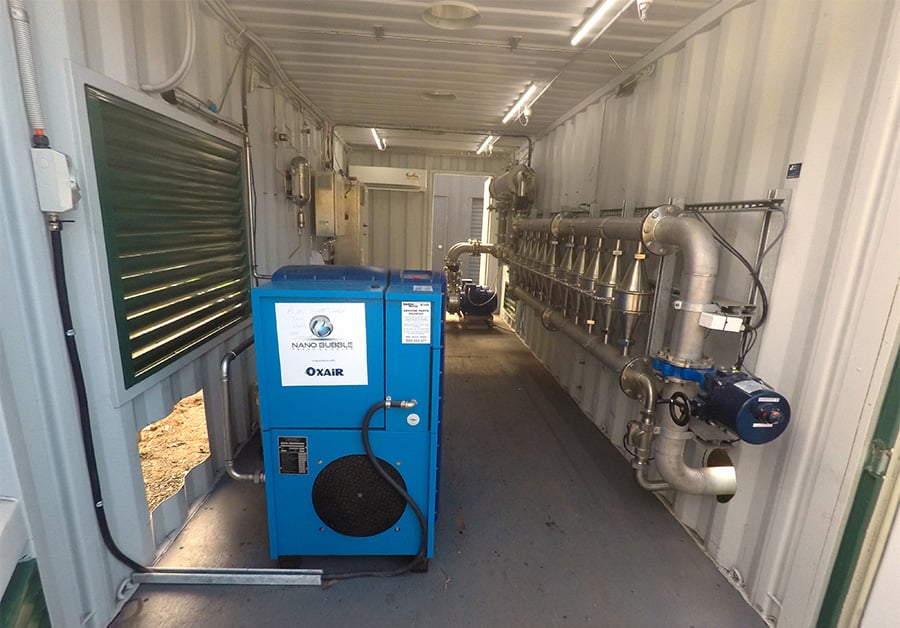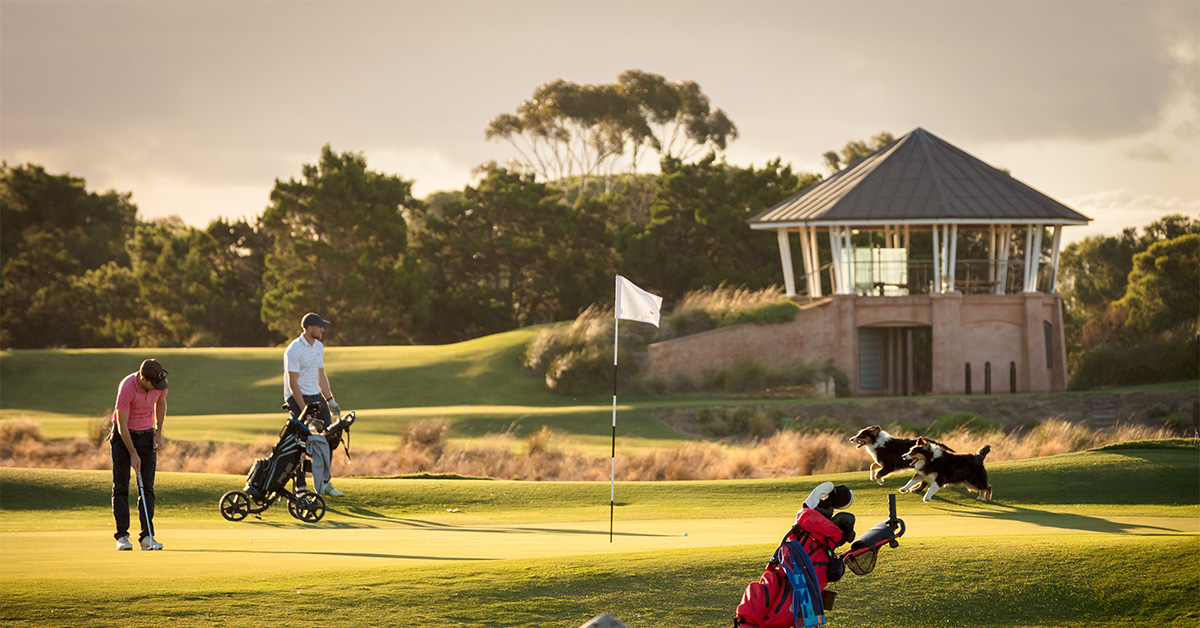A universal ingredient among successful golf clubs is having a long-term strategy for the future. Because if you’re not planning to succeed then you’re spiraling towards failure.
Good clubs don’t rely on selling part of their golf course to say afloat. They seek to make a substantial profit and reinvest in amenities for the benefit of members. But that doesn’t always mean clubs must live within their means. Sometimes it’s necessary to take on a manageable loan to improve a club’s facilities.
“No longer can clubs just aimlessly wander,” says Jeff Blunden, managing director of Golf Business Advisory Services. “Those clubs which are willing to develop a plan and then execute the plan based on what they find are going to find themselves in a better position than those who don’t have a plan and waver from year to year.”
Many factors separate well-managed golf clubs from poorly managed clubs. A few years ago we asked the question, ‘Is Your Board Jeopardising The Golf Club’s Future?’ With that in mind, Australian Golf Digest has looked at six clubs that have undertaken decisive action to set them up for the future.
There’s much to be learned from these six clubs: from setting five-year plans to seeking outside expertise, fostering camaraderie to communicating with their members, and adopting new technology and maintenance practices. They provide great lessons for all clubs that are looking at how their operations can be more effective.
The traditional golf club model is built around a board and sub-committees. That in itself imposes restrictions. But our focus clubs have shown how boards can generate good outcomes with sensible decision-making.
1. Undertake Strategic Planning
It’s easy to be envious of the facilities at New South Wales Golf Club on the northern tip of Botany Bay. A world-renowned golf course, immaculate practice facilities and a distinctive clubhouse make it one of the most prestigious clubs in the land.

NSWGC is in a sound financial position but that wasn’t always the case. “We weren’t in great shape in the early 1990s. But when you look at our offering today, it’s extremely pleasing,” concedes long-time general manager David Burton.
What turned things around was a commitment to strategic planning, which included rolling five-year terms since 1997. Every plan encapsulates the golf course, clubhouse, amenities and membership. In fact, NSWGC’s constitution now has the requirement for the club to have a strategic plan.
“[Given] the movement in boards, directors and volunteer boards, without a road map of strategy it’s very difficult for a club to work towards a common improvement outcome,” Burton says. “In my time we always knew what we were going to do in the next five years to make the place better. And it’s very difficult for incoming boards to deviate away from what has been agreed by the members and previous boards in terms of a strategic direction.”
In the past 24 months NSWGC has redesigned the iconic sixth hole to include a public coastal walkway, appointed a new course superintendent in Mark Parker, engaged world-renowned designer Tom Doak as course consultant, refurbished the golf shop and opened a new, state-of-the-art practice range/teaching facility (with car parking and storage) at a cost of approximately $5 million. Clubhouse interior furnishings are also slated for a makeover in the coming year.
A key behind NSWGC’s turnaround has been the establishment of a ‘future fund’. The strategy is for the club’s operating budget to make a modest surplus while its corporate membership revenue (say, $250,000 per annum) is set aside to generate surplus cash. Basically, the club reconciles what it wants to achieve in the five-year plan and draws down on the pile of surplus cash once it reaches a level to fund a pet project.
2. Consult The Members
Over many years, Killara Golf Club on Sydney’s leafy north shore had begun to resemble a botanical garden more than a golf course. Fairway widths on some holes had crept in to as little as 12 metres. Not only did tree canopies affect lines of play, they also reduced sunlight, absorbed moisture and made turf maintenance problematical.
Having long since disappeared from our ranking of Australia’s Top 100 Courses, Killara got its act together to remedy the course’s issues about 2010. The board spent three years to obtain development approval, which included removing many unwanted trees to improve playability. (Trees have been planted to conform to strict environmental laws.)

Then in early 2018, Killara undertook an ambitious course renovation, replacing all green complexes, bunkers and surrounds. At a cost of $5 million, the project will come in on budget when the new layout officially opens in September.
“This course is going to look fantastic in late spring and even better next year,” says Killara general manager David Gazzoli.
The club used cash reserves and some bank finance to fund the course renovations without imposing a levy on the club’s 1,750 members. Killara also used its own project management team to carry out the work on a course masterplan by Sydney-based architect Harley Kruse.
“The trick, however, was the board’s decision to focus upon member involvement,” Gazzoli says. “I think what we did well was take the members on the journey with us. They had the confidence because everything we said we’d do, we did. We listened to member feedback and told the members before we did it.”
“We did well was take the members on the journey with us. They had the confidence because everything we said we’d do, we did.” – David Gazzoli, Killara GC
The bravest decision Killara made was to adopt a ground-breaking style of bunker and green complexes. The putting surfaces will be Pure Distinction turf and the surrounds comprise the hardy Zoysia grass. The bunker walls are EcoBunker turf sods made from recycled synthetic grass while the bunker base is a porous concrete aggregate developed by Capillary Concrete.
While the cost is greater for the initial outlay, these low-maintenance bunkers have exceptional durability and underground drainage and should produce huge savings – both financially and in maintenance time – down the track.
That’s a great result for one of Sydney’s great private clubs as it attempts to re-enter Australia’s Top 100 Courses.
3. Implement Sensible Risk Management
Manly Golf Club on Sydney’s northern beaches prides itself as one of the most proactive clubs in the country. The club spent millions over the past decade to replace its kikuyu fairways with tough-wearing Windsor Green couch as part of a major course renovation undertaken by Thomson Perrett.
This winter, Manly embraced a pioneering technology to handle its irrigation water, installing a treatment unit designed by Nano Bubble Technologies. Plants and turfgrass require oxygen to survive and the NBT generator can increase dissolved oxygen levels to 28 parts per million. That’s quite remarkable given ordinary tap water contains about 6 parts per million of dissolved oxygen.

The benefit of increased dissolved oxygen is stronger turf at the root level, which is less likely to lead to Poa annua infestation. Firstly, the NBT generator purifies the irrigation water by injecting the nanobubble ozone (O3) to kill bacteria and pathogens. Then oxygen (O2) in nanobubble form is injected into the water held in the club’s two 500,000-litre storage tanks, which is used to irrigate the whole course.
Manly’s potential benefits are threefold: reduced water consumption, better quality water and a reduction in spraying chemicals. Preliminary estimates suggest the club can save upwards of $100,000 per annum.
“We want to be good environmental citizens as well,” says Manly general manager Nigel Gibson as to the decision to embrace the NBT generating unit. “We sit on Manly Lagoon essentially, so we’ve got tidal waters coming through our golf course so we need to be extremely wary of environmental effects. So that’s where any chemical usage and the amount of water we use is important to us.”
Manly’s decision centred on sensible risk management and good governance. Having observed the successful NBT trial at nearby Avondale Golf Club, the Manly board dipped its foot in the water. A management team collated information and took that to the greens committee for discussion. Once given the green light, a proposal to install the NBT generator was taken to the Manly board.
The beauty of the NBT system is that it’s a drop-in unit in a shipping container. Manly entered into a five-year contract with regular monthly payments along with the option to purchase NBT’s equipment after 12 months. And if it doesn’t provide the documented benefits, the club has the option to cease the agreement. Realistically, however, the club should see terrific benefits from adopting the Nano Bubble Technologies unit by the end of next summer.
4. Identify Your Strengths
Formed in 1892, Royal Adelaide Golf Club has a storied history as one of the nation’s five oldest golf clubs as well as being one of the founding fathers of the Australian Golf Union (today’s Golf Australia). But it’s unlikely a course architect would attempt to emulate the Seaton layout today.
What makes Royal Adelaide unique is all of the little idiosyncrasies, says general manager Andrew Gay. “It’s things like the train line [running through the course], the clubhouse being located in the middle of the property, the road that runs across the 18th fairway, the vast practice range, the different terrain of the golf course and the history. All those little things add up,” says Gay.
While it would have been practical for Royal Adelaide to rectify some of those oddities during course renovations, the club was conscious of retaining a point of difference. The core of its membership is seniors, not all of who wish to play 18 holes. Therein lies an important part of knowing your membership and what they seek in a club.

In a sign of that flexibility, Royal Adelaide trialled a ‘Dog Day’ on a recent Sunday when 50 members and 29 of their four-legged friends accompanied them throughout the round. The available tee-times were sold out four weeks in advance. The vibe was great – a relaxed feel among the diverse group of players that attended.
Says Gay: “What we do offer for a member’s club is the camaraderie, the social aspect, even the physical and mental health benefits of golf clubs. I see a lot of our old guys, it’s almost [as though] their reason for being around is to turn up to golf, to catch up with their mates, to have a few holes and just enjoy a bit of exercise and that camaraderie of friendship. And member clubs probably offer that more than what public facilities do.”
5. Make People Accountable
Not so long ago, Headland Golf Club on Queensland’s Sunshine Coast found itself in a predicament similar to a lot of regional clubs across the country: how to replace old infrastructure without making a substantial profit.
Headland has a semi-private business model capped at 1,000 full members with 60,000 to 65,000 rounds played each year on its hilly par-72 layout just behind Mooloolaba Beach. Although the club hadn’t incurred a loss over the past decade, in reality it was plodding along making small profits of about $100,000.
That’s not enough to build up a bank of money to reinvest in major projects, such as refurbishing an ageing clubhouse built in the late 1970s or to replace an inefficient irrigation system. To change the club’s fortunes, Headland needed a strategic direction and then to ensure the board focuses on that rather than listening to “the noise that you often get in golf clubs”.
Now with its house in order, Headland’s goal is to achieve a net profit of $250,000 (after depreciation) for each of the next five years. And that will allow the club to pursue major projects, such as course improvements, clubhouse upgrades and potentially increased water storage (currently 70 megalitres).

The key was making people accountable. “Really tying down the roles and responsibilities of everybody,” says general manager Ben Dobson. “So that the board members have a position description, their individual sub-committees have a role description, which ties in with that director’s position description. Staff have really clear position descriptions. And then beyond that appraisals based on those position descriptions.
“So there’s real clarity around who’s doing what and where their responsibilities lie. And that is what’s helped get it away from the board discussing day-to-day issues.”
As an example, Dobson controls the bar prices. They don’t have to be approved by the board. It’s on the general manager’s shoulders to ensure the club is maintaining a certain profit margin required from the bar operation. That sounds simple, but when Dobson started it wasn’t unusual to discuss bar prices for half an hour in a board meeting.
Headland will always be a work in progress, balancing the member proposition with public-access play. However, the club is in a stronger position because the board, members and staff know exactly where they sit and what everyone has to do to be sustainable.
6. Engage Outside Professional Expertise
Eastern Golf Club pulled off the ‘sale of the century’ when it offloaded the club’s property at Doncaster in Melbourne’s eastern suburbs for $99 million. Eastern used the cash injection to develop a new home at Yering in the Yarra Valley where it has built a 27-hole layout plus a nine-hole short course, all designed by Greg Norman.
The key for Eastern was to engage outside professional expertise to fully optimise the value of its Doncaster site. Urbis assisted as transaction manager, taking care of the preparatory work to minimalise uncertainty around the land (from environmental reports to high-level planning outcomes). Real estate agent Colliers International handled the marketing campaign, which resulted in Mirvac purchasing the site for residential development.
It was a smart decision – regardless of what Eastern has since done with the $99 million (excluding GST). The club had cash in hand with no joint-venture arrangements and no trailing payments. (Mirvac handled all the land tax, back rates and stamp duty.)
Having previously sold off a parcel of land at Doncaster to stay afloat, Eastern knew it had to canvass all possible solutions about its future – from being a fully public course or semi-public, to selling off more land or seeking a relocation. The board made assumptions about membership trends and then put those through an external financial model (trading and balance sheet for the next 15 years) by accounting firm Ernst & Young. Industry consultant Jeff Blunden also advised the club.
“As we slowly whittled down the options, we kept going back [to the members] with information sessions. So when we finally arrived at a vote, we didn’t have any significant group of membership that said, ‘You haven’t thought about X, Y, Z,’” says Ben Telley, general manager of Eastern Golf Club.
The whole process took slightly less than eight years – from assessments (in 2007) to the course opening at Yering (in 2015). Eastern was proactive about securing the club’s future without being under financial stress at the time of making those decisions.
“The board did it while we had $900,000 cash in the bank. Rather than waiting until the very last drop of the penny or being in debt, they had the foresight to take action,” Telley says.
“These planning processes are arduous and take a considerable amount of time. So when we transacted the Doncaster property we weren’t in a fire-sale scenario. Developers – in terms of pitching their price and product – had no leverage over the club. So when we signed with Mirvac we knew we were taking $99 million.
“Unfortunately, a lot of [clubs] leave it until it’s too late and then they start to make poor decisions or decisions that are less than optimal because they’ve left it so long.”



